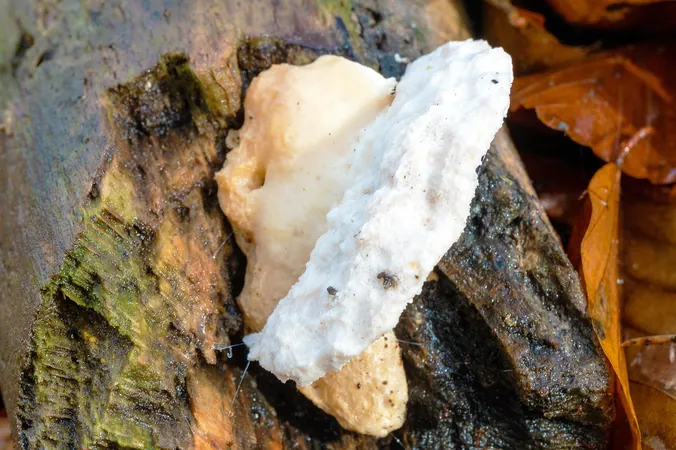
Scientists Discover Earth's Most Bitter Substance – A Fungal Revelation!
2025-04-17
Author: Ming
Unveiling the Essence of Bitterness
For most of us, bitterness is simply an unpleasant taste that makes us grimace and push certain foods away. But beneath this superficial experience lies a complex world of molecules that elicit these bitter reactions, and researchers are tirelessly uncovering their secrets.
The Bitter Bracket Mushroom: Nature's Enigma
A groundbreaking study has ventured into the intriguing realm of bitterness, focusing on a forest-dwelling mushroom renowned for its extreme bitterness: the Amaropostia stiptica, or the bitter bracket mushroom. This unique fungus thrives on the remains of dead trees, boasting a distinct shelf-like structure and an intensely bitter flavor.
Discovering Amaropostia Stiptica
Found primarily on decaying wood in tropical forests, the Amaropostia stiptica has a visually understated appearance—thin, resiny patches of creamy beige to light yellow. Although it lacks culinary or medicinal value, this humble fungus plays a pivotal role in nutrient recycling, breaking down tough plant material in its ecosystem.
The Mystery of Bitter Compounds
Our understanding of bitter compounds mostly revolves around flowering plants and synthetic substances. The BitterDB database lists over 2,400 bitter molecules, but many animal, bacterial, and fungal sources remain largely uncharted territory. This gap makes mushrooms an exciting frontier for discovery.
Bitterness: Danger or Not?
While our bitter taste receptors, known as TAS2Rs, warn us of potential toxins, the reality is more complex—many bitter compounds are harmless, and some dangerous toxins lack bitterness entirely. Surprisingly, these receptors are found beyond the tongue, appearing in organs like the stomach, lungs, and even blood cells, leading scientists to question their broader roles.
Identifying Bitter Gold
Dr. Maik Behrens from the Leibniz Institute highlights the importance of comprehensive data on bitter compounds and their receptors, stating, The better our data, the more we can develop predictive models to identify new bitter compounds and understand their effects. With this in mind, researchers have been hunting for underrepresented sources of bitterness.
A Trio of Bitter Discoveries
In their latest endeavor, scientists identified three novel bitter compounds extracted from Amaropostia stiptica, all of which activated human bitter taste receptors. The star of the show? Oligoporin D, which sensitively activates the TAS2R46 receptor even in minuscule concentrations—imagine a single gram dissolving into over 100 bathtubs of water!
Bitterness: A Pathway to Health?
Dr. Behrens explains how these findings broaden our understanding of natural bitter compounds and their potential applications in food and health research. Insights gained could lead to the creation of appealing foods that enhance digestion and help with satiety.
This exciting discovery indicates that bitterness is not just an unpleasant taste—it's a signal with the potential to unlock pathways to better health. Each new addition to the bitter compound database nudges researchers closer to comprehending how taste influences our biology in profound and unexpected ways.
A Growing Field of Research
This captivating study has been published in the Journal of Agricultural and Food Chemistry, marking a significant step in the exploration of the biochemical potential of fungi and the deep mysteries of taste. Stay tuned as the journey continues!


 Brasil (PT)
Brasil (PT)
 Canada (EN)
Canada (EN)
 Chile (ES)
Chile (ES)
 Česko (CS)
Česko (CS)
 대한민국 (KO)
대한민국 (KO)
 España (ES)
España (ES)
 France (FR)
France (FR)
 Hong Kong (EN)
Hong Kong (EN)
 Italia (IT)
Italia (IT)
 日本 (JA)
日本 (JA)
 Magyarország (HU)
Magyarország (HU)
 Norge (NO)
Norge (NO)
 Polska (PL)
Polska (PL)
 Schweiz (DE)
Schweiz (DE)
 Singapore (EN)
Singapore (EN)
 Sverige (SV)
Sverige (SV)
 Suomi (FI)
Suomi (FI)
 Türkiye (TR)
Türkiye (TR)
 الإمارات العربية المتحدة (AR)
الإمارات العربية المتحدة (AR)